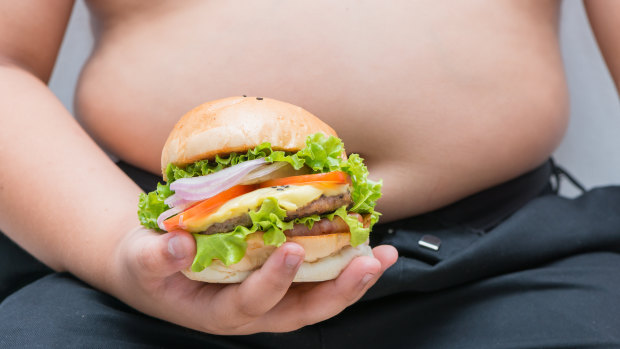This was published 6 years ago
Weight surge in young Australians sees 7 in 10 overweight or obese
By Aisha Dow
Almost seven in 10 Australians are now considered overweight or obese, after a rapid growth in the number of young adults stacking on too much weight.
The Australian Bureau of Statistics revealed on Wednesday that within just three years there had been 18 per cent jump in the proportion of those aged 18 to 24 judged to have an excessive BMI.
While this group is traditionally much slimmer than the rest of the population, 46 per cent are now considered overweight or obese, up from 38.9 per cent in 2014-2015.

More Australians are facing problems with obesity earlier in life.
Today, the typical Australian man weighs 87 kilograms and with an average height of 175 centimetres is deemed overweight, according to the ABS’ National Health Survey.
The typical Australian woman is also overweight, weighing 72 kilograms and with an average height of 161 centimetres.
“Men were more likely to be overweight or obese than women with 74.5 per cent men overweight or obese compared with 60 per cent of women," ABS director of health statistics Louise Gates said.
“On average, we were doing 42 minutes of exercise every day, which mostly consisted of walking for transport or walking for exercise (24.6 minutes), however we didn’t participate in sufficient strength and toning activities.
"In addition, 44 per cent of us spent most of our work day sitting."
The Heart Foundation said it was very concerned that the number of adults considered obese (5.82 million) was threatening to overtake those in the healthy weight range (5.92 million).
Close to 750,000 Australians were carrying an extra 40 kilograms of weight, said Heart Foundation general manager of heart health and research Bill Stavreski.
“The average Australian adult is also walking around with a spare tyre’s worth of weight,” he said.
“Women carry on average an extra seven kilograms while the average male carries an extra 11.4 kilograms.”
Less than 1 in 10 adult Australians is eating enough vegetables, and almost half do not eat enough fruit, according to the survey.
The Cancer Council, which has led calls for a tax on sugary drinks, renewed its calls for a national healthy-weight strategy.
Also of concern is the rise of mental and behaviour conditions, which now affect an estimated 4.8 million Australians and are the nation’s leading chronic health condition, ahead of back problems (impacting 4 million) and arthritis (impacting 3.6 million).
Anxiety-related conditions are on the rise, now affecting 3.2 million Australians, and about 2.4 million experience high or very high levels of psychological distress.
The survey delivered better news for alcohol and smoking trends, especially for young people.
Daily smoking rates have fallen from 23.8 per cent of the adult population in 1995 to 13.8 per cent now and the current generation of young people is increasing shunning cigarettes altogether, with only one in four having ever smoked in their lifetime.
Risky drinking, judged as having more than two standard drinks a day on average, is on the decline, with only 16.1 per cent of adults exceeding the guidelines.
Despite these fluctuating trends, Australians continue to rate themselves as relatively healthy, with over 56 per cent deeming themselves in excellent or very good health, while only 14.7% reported being in fair or poor health.